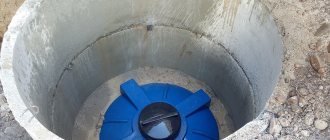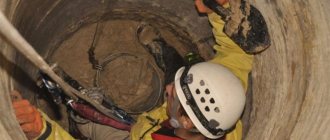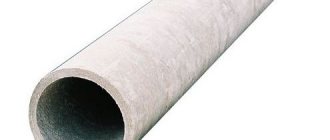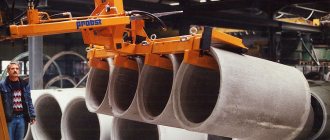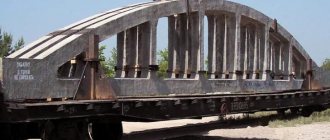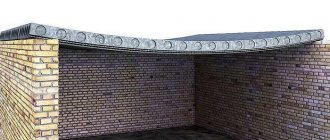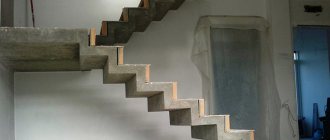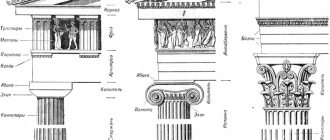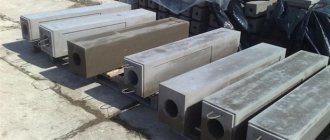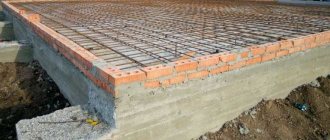Design and materials for manufacturing
Water intake wells can be tube or shaft. Tubular ones are called columns. Most often they are used for outdoor installation. These types operate on a hand pump. Their installation is carried out where groundwater is shallow.
The water well has a long service life with proper maintenance
To build a tube well, drilling equipment is used. The shaft type is the most affordable option for self-installation. This type is considered traditional for country houses.
Materials for the manufacture of a mine type structure:
- Plastic;
- Reinforced concrete;
- Brick or stone;
- Tree.
A water well consists of a gate, a head, a blind area, crushed stone, a clay castle, a trunk, a water level, gravel, a water intake part, and underlying water supply rock. If concrete rings were used for the arrangement, it is necessary to make external coating waterproofing. When installing iron rings, you must pay attention to the fact that all joints must be sealed.
Types of structures
The general system can be either narrowly targeted, designed to remove domestic waste from the house, or complex, combining the sewer system with a system designed to drain the site.
They work according to a similar scheme, so in the future we will talk about the general principles of installing structures for removing wastewater.
- Nodal or connecting well - this design is used to combine several pipeline branches into a single common drain. According to SNIP, sewer inspection wells can combine no more than 3 sewage branches, and there should be only one outlet branch. The configuration of the tray for merging branches should have smooth curves made in the shape of pipes.
- There are also linear wells; they are used on straight sections of the highway for inspection and maintenance of the branch. For household, private systems they are rarely used, since personal properties do not often have such distances. The distance between objects depends on the diameter of the pipe.
Linear well for home.
- Rotary structures are used to access the bend point of the pipeline. The rotation angle may be different. The structure is installed to provide free access to the inlet and outlet pipes, since the risk of congestion at turns is quite high.
Important: when arranging rotary structures, it is not necessary to install them at every turn.
Depending on the angle of rotation, it can be mounted through one, but not less often.
Angular, rotary well.
- The next type of viewing structures are differential ones. What distinguishes them from linear ones is that their inlet and outlet openings are located at different levels. They are intended to increase or decrease the speed of movement of wastewater in the system and are used to adapt to the terrain.
These structures are installed.
- If you need to reduce the level of the incoming pipe.
- When the speed of the moving flow is unstable, with sudden changes.
- When pipes cross structures located underground, for example, water pipes.
- If a flooded discharge into a reservoir is provided, such a design is the last line of transition.
- With a large difference, up to 3 m, between the entrance and exit.
Important: the differential structure is installed only if the difference between the pipes exceeds 500 mm, and the diameter of the pipes must be more than 600 mm.
- A well for filtration or a septic tank is installed in an area on sandy soil or sandy loam.
For private housing construction, as a rule, it is equipped with a natural, multi-layer filter, but there are restrictions on its use.
- Groundwater in this area should pass no closer than 1 m from the base of the structure.
- Its filtration limit is 0.5 m³ per day.
- On sandy soil the minimum contact area of the base is 1 m², on sandy loam 1.5 m².
- Storage tank - installed when there is no possibility of draining wastewater. In essence, it is a modern, improved type of cesspool. The drainage version of the design can serve as a reserve tank for collecting water intended for technical needs, for example, irrigation.
Operation of the storage tank.
We recommend reading: Appeal in arbitration proceedings
Construction of the blind area
When the construction of a well tunnel comes to an end, care should be taken to improve it. The blind area ensures the safety and cleanliness of the internal tunnel part. The fencing must be of high quality and provide convenient access to water at any time of the year.
When choosing a location for a blind area, it is imperative to take into account sanitary and hygienic standards.
The structure cannot be erected near sources of pollution. The blind area allows you to protect the well from dirt contained in groundwater. It is important that additional parts of the blind area are taken into account.
Before you start using the water well, you should check whether everything is connected correctly
Construction stages:
- It is possible to build a blind area only after the soil shrinks.
- Before actual construction, you need to take measurements of the site. The foundation must be reliable, so the depth of the area should be 30-40 cm.
- The upper ring of the shaft must be cleared of soil.
Soft and hard materials are used for manufacturing. For hard types, stone, clay, concrete or tile are used. Soft types are made from waterproofing film. The blind area can also be made of brick.
Advantages of autonomous water supply
The main advantage of autonomous equipment is that it is possible to obtain water similar in quality to spring water. The water is free of: rust, chlorine, bacteria. Other advantages of such equipment include the following:
- Budget savings. When running a water supply from a well to a house, costs are significantly saved; people use natural water without paying for its consumption. In addition, the installation of such water supply is much cheaper than other types of sources.
- Independent control over the operation of the system. You can regulate the water pressure yourself, lay new pipes to the bathhouse, to the summer cottage.
- Lack of harmful substances (chlorine) that are added to purify water.
- You don't have to fill out a lot of paperwork. To obtain permission to drill a well, you will have to collect a lot of documents and go through more than one authority, but with an autonomous water supply system you can forget about these troubles.
Even if there are power outages, you will not be left without water; you can get it in a simple way by lowering a bucket into a well.
Detailing of a water well
An important part of the project is detailing. This is a network diagram that shows the symbols of the order in which the fittings and packaging parts are laid. When drawing up the details, you need to outline the places where valves and hydrants will be installed.
Detailing involves creating graphic images that show individual details of the entire structure.
The graph can include text values containing information about the materials from which individual elements will be made, technologies, dimensions, tolerances and surface cleanliness. The drawing must be detailed. It is part of the entire water supply project.
What does detailing take into account:
- Water supply networks;
- Wastewater networks.
If you do not have experience in constructing a water well, it is better to turn to professionals.
Detailing takes into account the following types of inspection wells: nodal, control, linear, rotary, differential, flushing, special purpose.
Inspection stations are almost no different from the sewer network. The main difference is the design of the structure.
Instructions for water supply installation
In order for the system to work without interruptions, it is necessary to think through each stage of the equipment’s operation and read additional information on how to install plumbing. It is important to choose quality equipment. In addition, you should pay special attention to the following details:
- Compliance with all requirements for the operating condition of the well.
- Compliance with pipe laying rules.
- Putting the internal wiring in order.
The types and methods of installing a well depend on the size and purpose.
Well waterproofing
Any well needs reliable waterproofing for the following reasons:
- It is necessary to exclude the ingress of groundwater flowing near the ground. It is important to fix the leak in a timely manner so that the well remains suitable for obtaining water. Often fecal matter, petroleum products, organic compounds, salts, alkalis, bacteria, and chemicals are detected in the liquid, which make drinking water unacceptable.
- Concrete is a durable material, but even it is destroyed by acids and salts. Over time, the material becomes loose and crumbles, losing its durable qualities.
- To increase the resistance of the material to aggressive environments, it is necessary to carry out waterproofing at the stage of creating rings for the well. This will prevent dirty water from entering through the walls of the rings.
Pipe laying principle
When waterproofing is carried out, do not rush to bury the rings; you need to lay the pipes and make an insert, following the following tips:
- The laying of the water supply from the well must be below the freezing level so that the water does not freeze at subzero temperatures. Data on the level of soil freezing can be obtained from the administration.
- It is better to use polyethylene pipes for water supply. To supply the house, you should use pipes with a diameter of 32 mm.
- Experts recommend laying pipes in two lines, especially since they are inexpensive. The first pipe will be the main one, the second (backup) may be needed in emergency situations. Thanks to this method, there is no need to dig trenches and replace pipes.
- You should not lay pipes on the ground; it is important to build additional protection; for this, larger diameter pipes with or without insulation are used. If the pipe is located below the freezing level, it does not need insulation.
Internal wiring device
Internal installation of pipes is carried out in one of two ways: collector, sequential. The sequential option is suitable for houses that use several water intake points, and access to the pipes remains open. Several branches extend from the main point, and if several of them are used, the water pressure weakens. With the collector type, each tap is the final output of a separate communication system, independent of each other.
Equipment selection
In order to carry water from the well to the house, you must use only modern equipment:
- pump;
- pipe filters;
- water heater;
- hydraulic accumulator
Which pump to choose?
There are 2 types of pumps for wells: submersible and surface. The main factor influencing the choice is the depth of the water in the well. If it is not significant, then a surface pump operating at a depth of up to 8 meters is suitable. An example of such equipment is the domestic Vikhr pump. Its power is not enough for a residential building; its characteristics are best suited for a summer cottage.
If you need water supply for more than just irrigation, you should take a closer look at more serious systems. Submersible pumps are inexpensive; common brands include “Stavr” and “Zubr”. The maximum height of water rise is 60 m, therefore, the pressure will be enough for water to flow even to the second floor of the house.
Features of local water supply
The most important thing to do when installing a home plumbing system is to maintain the distance from the cesspool to the drinking well. It can vary within fifty meters, but it should not be less than twenty meters. So:
- This norm applies to septic tanks and sedimentation tanks - both primary and secondary, when the house has a sewerage system. The reason for this distance is obvious: the contents of the drains, in the event of a violation of the seal of a particular sewer tank, should not get into drinking water.
- In many country houses there is no sewage system, and their inhabitants use toilets located in the yard. The cesspools of such toilets are rarely sealed. In this case, it is better to make the distance from the well to the toilet as wide as possible.
- As for the location in relation to the foundation of the house, the standards are completely different. The water well may be located quite close to the building. If the water supply to the house is provided from a well drilled before the start of its construction, it may generally be located in the basement.
- When the decision to install a water supply is made after the house has already been built, the minimum distance from the house to the well is three meters.
We invite you to familiarize yourself with: Caring for a glass shower cabin.
We are building it next to the house.
- When installing a home water supply system, in addition to a drinking well, auxiliary tanks are also built, which are necessary for maintaining the network and eliminating emergency situations. Their number depends on several factors. They matter: the distance from the well to the foundation of the house, the complexity of the terrain of the site and the presence of other buildings on it.
- In the simplest version, when the drinking system is built at a minimum distance from the house, one inspection well located at the pipeline entrance to the building is sufficient. Taking into account that the external pipe distribution is carried out 20 cm from the wall, then with a meter diameter of the well, the distance from its axis to the wall will be at least 70 cm.
- In a situation where the drinking well is significantly removed from the house, you will have to build several inspection tanks. The distance between water supply wells should be no more than 15 m. By the way, this norm applies not only to water supply wells, but also to sewer inspection wells.
- At the point where the direction of the pipeline changes, it is necessary to construct a rotary well. Blockages most often occur in these places. On the pipeline route, it is often necessary to change the depth of the pipes, which means that a differential structure will also have to be built.
Here the distances are regulated solely by the features of the relief. But, in order to avoid unnecessary costs, these two types of auxiliary tanks can be combined with inspection structures.
